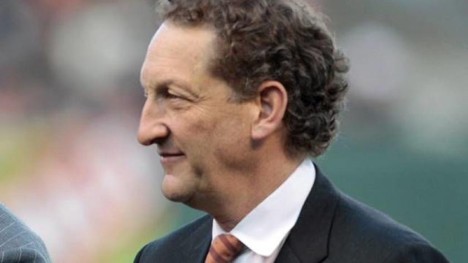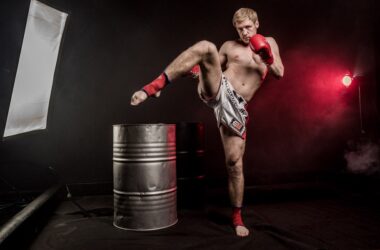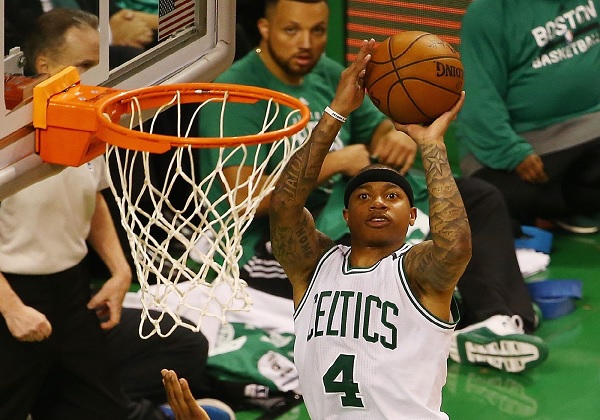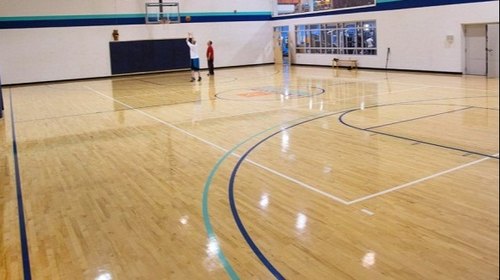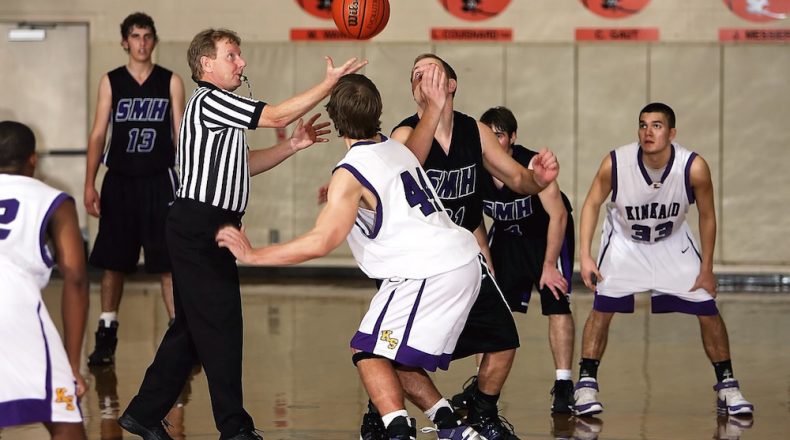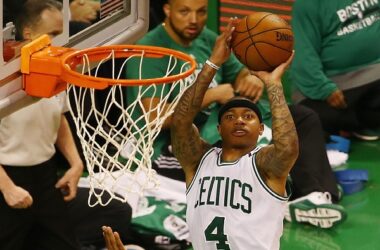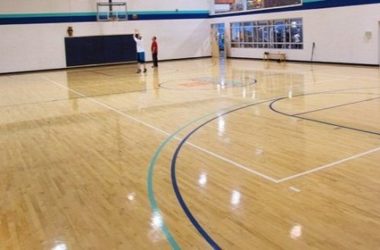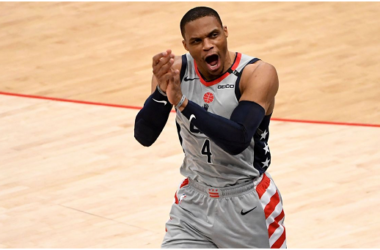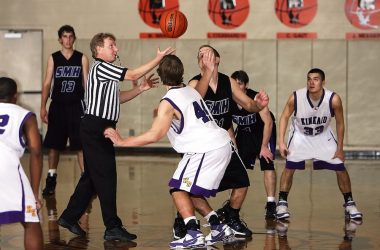Listen to the full podcast here:
Full Transcription below:
Rod: KNBR/KNBR-FM San Francisco. Larry Baer is joining us on the UMA guest line. Hello Larry, how are you?
Larry: Hey, Rod, how are you doing today?
Rod: We are doing just fine sir. Let’s go back before we talk about the present, and then go forward. Last weekend the ballpark was alive. It was so, so great to have fans back. It seemed like it went fairly smoothly. Everybody was happy. Did things progress in that way for you guys?
Larry: Yes. We were really overjoyed with the way the fans turned out and the energy they brought. I think it was really kind of a reopening of our city and of our community that we had hoped it would be. It started where Bear Breed, London Breed, and Libby Schaaf, Mayor of Oakland came. And I got to say, we were talking, people were kind of surprised by this — the over under for mayors staying or elected officials staying for a game, eh, maybe an inning and a half, maybe a couple innings. And Ed Lee, I got to say, was amazing. He would stay a long time. He was a huge fan. But London Libby, actually stayed for the entire game and fireworks on Friday. [laughter]
Tom: Yeah, that’s why they stayed. People love their fireworks.
Larry: Come on, they were working the bullpen matchups. Come on, guys. [laughter] It was really wonderful. And obviously, two exciting games Friday, Saturday, so, not as much from a Giants perspective, but great energy. Talked to the players, and Farhan Scott gave, they all felt it. And it was exactly what we were hoping for.
Any operational glitches, we’re working on, I just want the fans to know, because the concession lines were a little longer than usual. What’s happening in the world where workers returning to especially food service jobs, has been a little bit uneven. Right? But I think we’re seeing science that’s going to be much better when we come back home on Monday against the Cardinals.
Tom: You know, we had John early in the year, right around spring training, and you said very frankly, hey, I expect us to contend. And here we are. It’s July, and you guys are not just in the race, you are the pacesetter in the race.
So that being said, Larry, we’re firmly in the trade season, and we’ve seen Farhan and his staff are immensely creative and how they can put these deals together and add to this club.
What does the budget look like? Can you guys add a contract at the deadline? Are you prohibited in any way? How do you view what lies ahead here in July?
Larry: Well, the budget I don’t think it’s going to be the driving issue or even a major critical issue. I think as we’ve talked about in the past, it’s more along the lines of — what would you give up if we are in the trade talks? And I think you’re Farhan, and I think the view of him and his department, is that we don’t necessarily have the glaring weaknesses that might necessitate the urgency on trades. So we’ll see.
Another point that gets made a lot is — when you make a trade, you are eliminating, let’s say you make a trade and let’s say it with somebody not on the 40 man roster, or not in the major leagues — you’re taking somebody, I mean, you’re adding somebody to your team and somebody else has to go off the roster, even if you’re not trading somebody from your major league roster. Lets say the 26th man, for simplicity.
So that’s an issue. I mean, right now we allow roster congestion because we’ve got players that, a lot of players are performing at a high level. And you know, it’s a Rubik’s cube who to put on the roster, and then we have other people coming back. Whether it’s Longo or Brandon Belt. So it’s a little bit of congestion there too.
I think everybody is really measured and careful at this point, evaluating. Not that trade discussions are going… Really, in any front office, full tilt, here we are July 1st, and it’s a whole month before the deadline.
Tom: I’m wondering how you guys view the whole trade stuff, and where you guys are at? Because conventional wisdom was — we’re going to play these guys, try to compete, and our young guys are coming, our young guys are coming.
Well, I mean, no one in their wildest dreams could have imagined the record you guys have had at this point. Did things change at all in that — yeah, you know what, maybe we weren’t thinking about getting rid of any of these guys, and I’m not saying the top top guys, but you know what, maybe we do want to make a push this year. Because no year is ever guaranteed. And just because we got young guys coming, and just because we had a good year this year, doesn’t mean that necessarily builds to the following years. You want to take your chances when you can take your chances.
I mean, I’m sure you guys are flexible, but I’m sure the out looks a little bit different than maybe you expect it might be? How do you adjust to that?
Larry: And that’s a fair point. I think it’s a fair point that any time — and we’ve seen this, just take previous years where we’ve been in contention the past decade — you may not have, nobody really predicted us to be there in those years, like ’10, ’12, ’14, and we’re there. And so it’s a fair point that maybe like would be able certain plans for certain players might change.
Having said that though, it kind of goes back to the earlier point, in just thinking thinking about this well in advance of any serious discussions of trades is that — who do you really want to move off the roster, the 25 or 26 man roster? Who do you really want to say good bye to? Especially when you have guys that you know are going to come back? And Long though would be one. I mean, hopefully Brandon Belt’s health holds up so he can come back as well, and there are others that are coming back, that are in rehab, Aaron Sanchez and others.
So you got to figure that out. But it’s a fair point, Tom. Because I do think “seize the moment” is also very much a part of the DNA. And I would say. you got to look at the moment we’re in now, it’s July 1st. So what moment, you know, there could be more data as you go through July. So you got to get that, kind of square away where you are at the end of July, not so much at the beginning of July as well.
Tom: Sure.
Larry Baer joining us here in the Tolbert, Kruger and Brooks show. There’s nothing you can do about injuries. But does it have you guys kind of banging your head against the wall? Or do you just push through, and next man up? And at least you know you’re going to get some guys back here fairly soon.
Larry: It’s one of these things, you know, there was a good story written, I think it might have been the New York times, there’s just so much back and forth of the Why, and the Why is not going to help us so much, so we don’t need to really focus on Why.
But it’s throughout baseball, right? And it just seems to me that the fact that the injuries are indexing so high, has something to do with the 60 game season of last year, not to blame it on the 60 game season, but — think of the pitching, I mean, no pitcher, my understanding, no pitcher threw more than 90 innings, so nobody really got stretched out in ways that you would in a normal rhythm of your entire career, even high school, college, in terms of workload. So you just wonder.
I don’t think that we’re at a spot though that… We’ve had really good group that’s deep, and we want that depth to hopefully sustain us. So as the guys have come back, we’ve been able to mix and match in really good ways. So I’m very proud of the fact that, the rehab, we haven’t been able to cut rehab short, or hadn’t felt the urgency to cut rehab short. We’re getting guys back that are ready to be back.
Tom: Down in Southern California, we’re seeing Shohei Ohtani just put on an absolute show, and really do things that, I mean, we really haven’t seen. I mean, it’s that amazing. And I know you guys were kind of in the mix for him. Do you… How close were the Giants to landing Shohei? And do you remember anything about the courtship of Shohei that you could share with us?
Larry: Well, I remember the meeting, at FCAA in LA, where we all went down there.
It was funny, there was… As it turned out he selected seven teams. And four were National League — as finalists — four were National League teams and three were American League teams. And you wonder how much of that was a head fake. Because we all, as we were working out the presentation, sort of in the back of our minds said — well, because of the DH, isn’t it just more likely he’s going to go to an American League team? And maybe the DH goes away, somewhere mid contract. So that was odd. But we were one of the seven teams.
And we made the presentation. I mean, the first thing I remember is, I mean, he is a big man. His stature is just incredibly impressive. And Boach was there, and, no surprise, no news bulletin — Boach is a big man. And he didn’t… Said, two of them as they shook hands, you can see there was an admiration from Ohtani to Boachie, but you know, they were two big men, and just had a really impressive stature.
In terms of us getting him, I mean, we did in the back of our minds think he was going to go to an American League club. Folks were secretive, a little secretive — the clubs. They revealed it eventually. It was funny, there was an owner, I won’t say who, we were checking into the hotel as we were getting the reservation, the hotel across the street from where the presentation was, and as I ran into a team owner I said, oh, hey good to see you down here, what are you up to? And he says — oh, I’m coming to visit my daughter who goes to USC — and then I saw like five members of his front office behind him. [laughter]
Tom: It’s a close family they got.
Larry: And then I said — wow, USC is really popular in your front office, right? All coming to see their children at USC. [laughter]
Tom: That’s awesome.
Larry: But I think that behind the scenes it was sort of a little bit of a feeling that he was going to go to the American League. The feedback that we got is that for him — I mean I think he perhaps wanted to be in a team that wasn’t such a heavy media focus, where there may be night to night, the pressure would be 10X 5X, like say at the Yankees or something, versus a team like the Angels, who — a big market, the two teams in that market, and sometimes are viewed as the second team in that market.
Tom: Sometimes?
Larry: [laughs] Sorry, Tom.
Tom: Larry, he’s right where he should be. Right where he should be — in Anaheim, helping the Angels to 9 games under 500 or whatever they are. Now they’re actually two games under 500.
Larry: But I got to say, isn’t it amazing what he is doing? And I think —
Tom: Oh, it’s incredible.
Larry: Spectacular. I mean, he’s doing things like he’s saying yes to things like the home run derby. He’s out there. I mean, it’s just a wonderful thing for the game. And you know, there was a lot of people in baseball, conventional wisdom, we weren’t really part of this necessarily, that said that there’s no way he could do this and that he’d break down — and he hasn’t.
Tom: It’s incredible. Incredible athlete.
I mean, when we say we’ve never seen things like this, we haven’t, because no one was alive when Babe Ruth was doing what he was doing. It’s like watching a football player go both ways — defense…
I mean, just, this is something you just… You can’t even draw a comparison to, because there are no comparisons to a guy who’s a top notch pitcher and leading the league in home runs. I mean, it really is incredible.
And I’m watching it, because I watch the Angels a lot, obviously, and I’m just like — you almost take it for granted sometimes, like, oh, this guy’s a monster and he’s a great athlete too. It’s incredible how fast he is. But then you stop and really think about it. You’re like… I mean, who even thinks about doing that? And this guy is doing it in the best league in the world, and doing it at a high level on the mound and with the bat.
Larry: Yeah.
And the thing about it is he’s a very intelligent man. One of the things that he… Because we had the front office folks with us and everyone, but the person he really gravitated toward in the meeting was Buster. And Buster… And he was really interested and asked through the translator a number of questions about throwing to Buster. And some of the catcher, some of the setups, and all the things, and he’d watched a lot of baseball. Super intelligent. And I think in today’s game you have to be, to be able to do everything he’s being asked to do.
It’s one thing to have the tools, which he undoubtedly has, but it’s another thing to be able to process playing, hitting and pitching, and playing the field. Unbelievable.
Rod: Last question. Actually, it’s three questions. You guys took the screens down, so the Knot Hole gang is back in right field. Why did you guys decide to do that? Were the players consulted? And if you chose to, for whatever reason, could you put it back up in mid season? Or once that decision has been made, you have to see it through to the end of the season?
Larry: Well, there’s really one answer to all three questions, Rod, is that part of our lease requires access to the Port Walk and to open up the ballpark to the Port Walk.
So we believe that… At least for now it’s a requirement. We could try to get that waived if we really felt we should get it waved. We’ve had a good… Since we’ve had it open, we’ve had good results. I mean, we could, for baseball reasons, determine that that’s the right thing. There’s not a… Internally, we don’t really have that mindset that it’s a better baseball presentation or the Giants will be largely disadvantaged by having the Port, the gates open.
The wind difference is… It’s hard. The studies are difficult, because I know what we all experienced last year. But remember, last year was only July, August and September.
Rod: Sure.
Larry: But the answer is — without doing something, we’d have to open them, doing something with the regulators, we will keep them open.
Rod: Larry, as always, we appreciate the time and the insight, sir. We’ll talk to you in a couple of weeks. Be well.
Larry: See you in a couple weeks. And see you at the ballpark next week.
Tom: You got it. Thanks, Larry.
Keep up with the team by following the SF Giants on Twitter and CEO Larry Baer on Linkedin.


